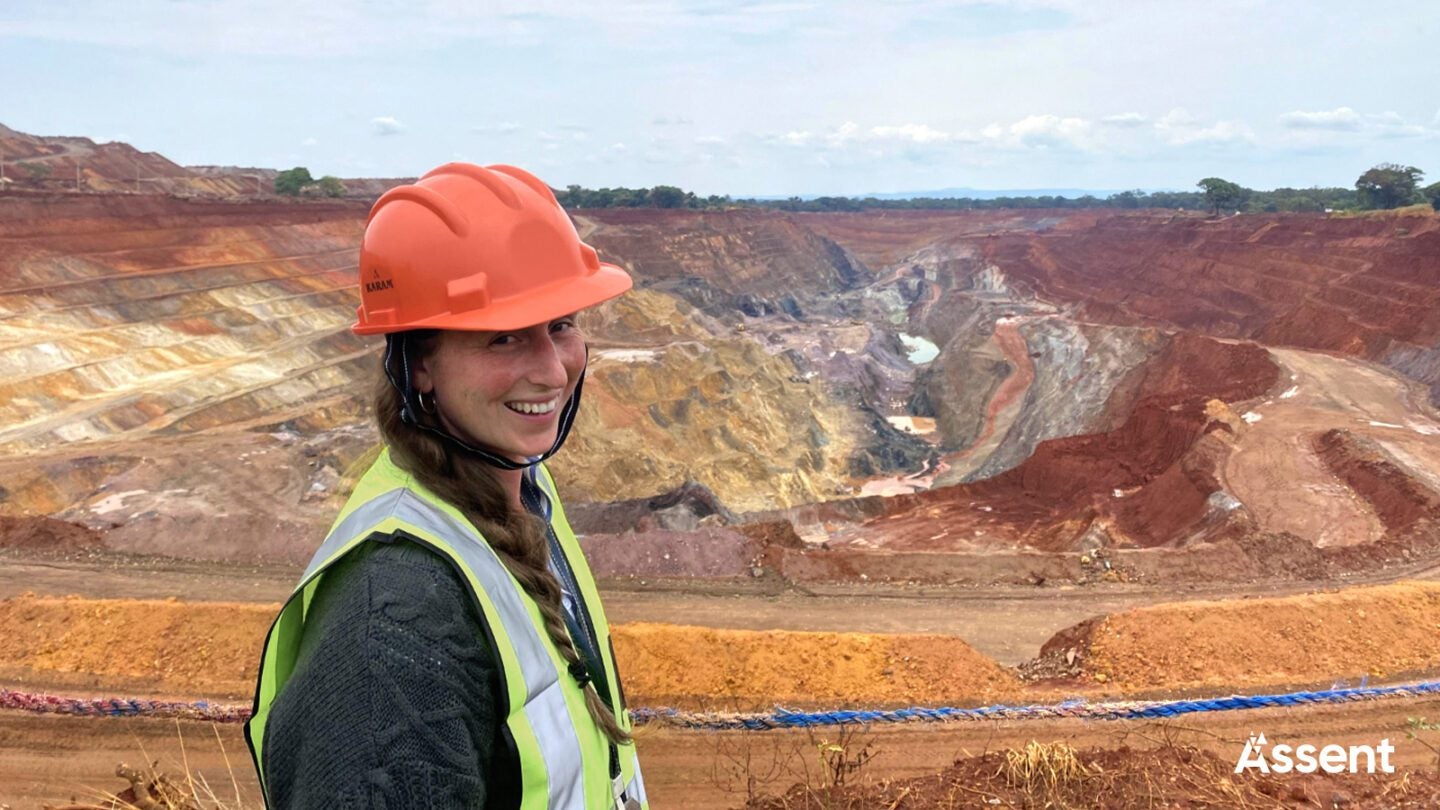My name is Jamie Wallisch, and I’m a subject matter expert on responsible sourcing at Assent. I help companies analyze their supply chains for environmental, social, and governance (ESG) risks, particularly conflict minerals, child labor, and other human rights issues.
My research has taken me to many compelling places, but none compare to my recent journey to the Democratic Republic of the Congo (DRC). I traveled to Kolwezi, DRC, as part of a delegation with the Fair Cobalt Alliance this November, to engage with the current structures in place regarding cobalt mining. Because cobalt is used in nearly every type of technology and battery, demand has skyrocketed in recent years, and I wanted to see firsthand how it’s being mined and to meet the individuals working to extract this vital resource. I’ll be sharing stories and learnings from my journey in a series here on Assent’s blog.
Visiting mining sites and talking with the Congolese people and other sustainability experts taught me the importance of resilience, and that building a sustainable supply chain not only improves business, but the lives of the people within it.
Cobalt: A Need For Responsible Sourcing
Seventy-five percent of the world’s cobalt supply comes from the Kolwezi area, according to research from the Center of Child Rights and Business. This statistic is staggering, but it’s only the beginning. Cobalt has the highest known child labor rate and has been known to create health issues for women and workplace safety issues for male miners.
Cobalt is the foremost concern of responsible mineral programs, equally as important as tin, tungsten, tantalum, and gold (3TGs), otherwise known as conflict minerals. It’s a perfect example of how responsible sourcing and building resiliency in your supply chain create opportunities. Companies can no longer just look at if their products contain cobalt — they need to understand the circumstances around sourcing and its overall sustainability impact, and this holistic approach means companies are not only better prepared to meet today’s requirements, but tomorrow’s demands.
And for cobalt, that is essential because future demand is only going to increase, creating further supply chain and ESG risks.
Building Supply Chain Resilience
A sustainable supply chain is resilient against disruptions and protects you from brand damage. But sustainability is a journey, and it’s not always clear where to start. What my time in the DRC taught me is that companies can start by prioritizing resiliency in three key areas:
- Visibility
- Accountability
- Transparency
Visibility
The sustainability journey begins by gaining deeper insights into where materials are sourced and how that extraction process touches human lives. This means engaging suppliers to collect both product and ESG data, incorporating surveys that approach sustainability from multiple perspectives. In cobalt’s case, corporate due diligence should include topics like child labor, workers’ rights, safety, and anti-corruption and bribery. The goal should be deep visibility into your product that aligns with the OECD Due Diligence Guidance for Responsible Supply Chains of Minerals from Conflict-Affected and High-Risk Areas.
When you start building a resilient supply chain, the key is to keep things as simple as possible without compromising on data quality. Using industry-standard templates like the Extended Minerals Reporting Template (EMRT) from the Responsible Minerals Initiative will help establish a good baseline for your sustainability journey. You can also use a solution like the Assent Supply Chain Sustainability Platform to streamline a deeper sustainability program that automates EMRT outreach alongside numerous other ESG risk factors.
Accountability
Creating resiliency and sustainability doesn’t stop at collecting data, however. Accountability requires that you choose responsible suppliers and use your knowledge to support suppliers as they mature their sustainability programs. Companies that develop their suppliers into sustainability partners will be better positioned to deal with future market pressure and legislation concerning other minerals.
Once you’ve collected risk data from your supply chain, the next step in the journey is to make meaningful impacts by turning data into tangible efforts internally and within your supply chain. This most often involves establishing strong education and supplier support, and can extend to recommending corrective actions to suppliers and giving preferential status to those that make efforts to improve their ESG score or can provide more comprehensive ESG data.
I work with companies to help them screen their suppliers for ESG risks, including the hidden risks that are difficult to detect through surveys alone. In my experience, companies that take the step of screening suppliers for adverse media mentions or inclusion on denied party lists are typically able to grow their ESG programs faster.
Transparency
Of course, information is pointless if it’s not communicated. ESG data needs to be shared internally across departments, and should also be communicated externally to stakeholders like customers and investors. And when it comes to ESG performance, transparency and honesty are the best policy. The sustainability journey is about growth, and stakeholders are more interested in seeing continuous improvement than perfection. ESG reports should showcase where your program is going and demonstrate a solid foundation for getting there, including the tools you plan on using. To that end, Assent’s team helps you tell a more compelling ESG story in your reports, with data and insights into your ethical sourcing. We provide expert-crafted supply chain report inserts aligned with industry standards that help your readers understand your efforts on ethical minerals sourcing.
In addition to raising your brand’s profile, ESG reporting also creates further awareness and demand in the market for sustainable products. The more businesses talk about ESG and highlight how they deal with human rights risks, the more consumers will be aware of, and choose, to purchase sustainably-sourced goods.
The Future of Sustainability
My time in the DRC showed me that ESG is shifting our focus away from the abstract concept of “doing good” to a more grounded approach that connects products to the people who make them.
The future of sustainability is in understanding products: What they are made of, where they come from, their embedded environmental footprint, and who makes them. It’s being aware that every battery, electronic, or consumer good that gets built can be traced back to an individual person — it’s our responsibility to support the resiliency of everyone in our supply chain by pushing ourselves to see deeper into our products, holding ourselves accountable for our supply chain’s impact, and being transparent with the market.
In my next blog article, I’ll share how visiting the DRC has informed my understanding of the circular economy, and the deep connection between product compliance and ESG. Stay tuned!
Learn how to grow your responsible minerals program with expert tips from Assent’s free guide, Dig Deeper: Building a Conflict Minerals Program for Today’s Risk Landscape. Companies today face greater pressure to report on more minerals, from more countries, in greater detail. This guide will show you how.










